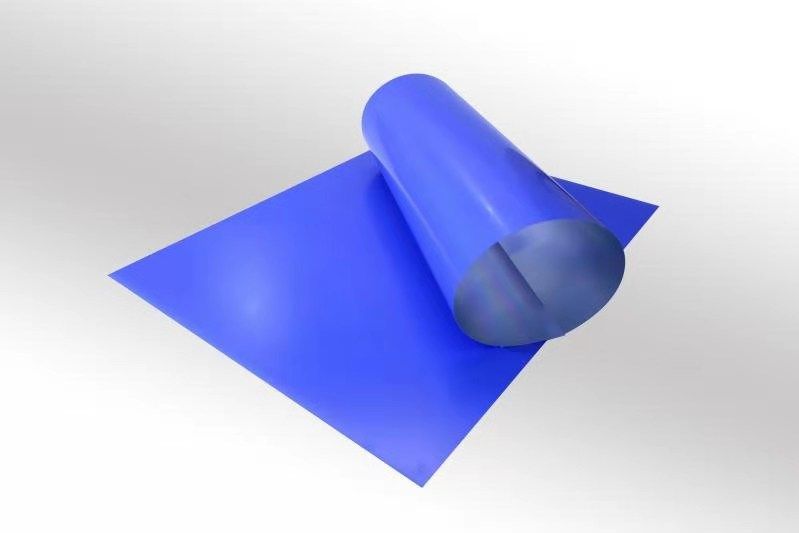
News
Positive double layer thermal CTP plates are high-tech products used in the printing industry, primarily for digital printing during the platemaking process. CTP (Computer to Plate) technology converts digital images directly into printing plates. Compared to traditional platemaking methods, CTP offers advantages such as high efficiency, low cost, and consistent quality. In practical applications, positive double layer thermal CTP plates are widely used in a variety of fields, including packaging printing, book printing and commercial printing, meeting the needs of diverse customers.

The core advantages of positive double layer thermal CTP plates in offset printing are listed:
1. Revolutionary Breakthrough in Double-Layer Design
The positive double layer thermal CTP plate utilizes a three-layer composite structure of a hydrophilic aluminum base + resin layer + thermal imaging layer, achieving a significant performance improvement through a patented double-layer coating process. Its core innovations include:
- Bottom Resin Layer:
Utilizing o-toluenesulfonamide formaldehyde resin, the sulfonamide groups on the molecular chain form covalent bonds with the aluminum base, resulting in adhesion 2.3 times greater than that of traditional single-layer plates, fundamentally addressing the industry's pain point of easy delamination of conventional plates.
- Top Thermal Layer:
This CTP plate combines linear phenolic resin with an infrared-absorbing dye (such as IR-830nm). When scanned by an 830nm laser, the exposed area instantly heats to 180°C, triggering the breakage of the resin molecular chains to form a soluble structure. Unexposed areas remain stable thanks to a solvent inhibitor and solvent promoter, enabling precise imaging.
This structural design provides the double layer CTP plate with exceptional resistance to chemical corrosion and mechanical wear. Test data shows that after immersion in a 5% NaOH solution for 24 hours, the coating loses only 0.03g/m², significantly better than the 0.12g/m² of a traditional single-layer plate.
2. Comprehensively Superior Printing Performance
- Dot Reproduction Accuracy:
Thanks to the synergistic effect of its double-layer structure, this thermal CTP plate achieves precise reproduction of dot gradations from 1 to 99%. At 250 lpi screening, 2% of dots remain intact and 98% of dots remain smooth. Tests conducted by a newspaper group show that newspaper images printed using this plate achieve 3-4 levels of shadow detail compared to traditional PS plates.
- Improved Press Life:
When printing with conventional inks, the press life can reach 150,000-200,000 prints, and with UV inks, it can stably reach 80,000-100,000 prints. Through optimized post-baking processes, the plate's press life exceeds 500,000 prints, making it the preferred solution for commercial web printing.
- Advantages in Water-Ink Balance:
The development accelerator in the resin layer allows the plate to quickly achieve water-ink balance during the initial printing phase, reducing the start-up scrap rate by over 40%. A packaging printing company reported that using this plate reduced the time it takes to produce the first qualified product per shift from 15 minutes to 8 minutes.
3. Double Breakthroughs in Environmental Protection and Efficiency
- Green Platemaking Innovation:
Utilizing a low-alkali development system (pH 8.5-9.0), developer consumption is reduced by 30% compared to traditional positive plates. Some models are specially formulated to meet long print runs without baking, reducing energy consumption per plate by 50%.
- Improved Production Efficiency:
With a sensitivity of 100-120mJ/cm², this thermal CTP plate is 20% higher than conventional thermal plates. When used with mainstream CTP equipment, it can produce plates at a speed of 30 sheets per hour. After introducing this plate, a commercial printing company saw its daily plate production increase from 120 to 180 sheets, a 50% increase in production capacity.
- Ease of Use:
It offers a wide development latitude, compatible with over 80% of commercially available developer brands, and boasts a wide development temperature range of 23-28°C. Even after the developer has aged to 150% of its replenished volume, it maintains sharp dot edges.
4. Guaranteed Stability in Harsh Environments
- UV Ink Resistance:
The top phenolic resin layer offers excellent resistance to the reactive monomers in UV inks. In a cosmetics packaging printing project, after 100,000 consecutive impressions, the solid density decreased by only 0.05D, compared to a 0.12D decrease for a traditional single layer CTP plate over the same period.
- Adaptability to Extreme Temperatures and Humidities:
The specially sealed aluminum base exhibits less than 5% sensitivity fluctuation after six months of storage at 85% humidity and 40°C. This characteristic has enabled this printing plate to achieve over 60% market share in the humid and hot regions of Southeast Asia.
- Resistance to Mechanical Damage:
With a surface hardness reaching a 3H pencil hardness rating, it can withstand squeegee pressure of 0.3N/mm during printing, 50% higher than standard plates. Tests conducted by a label printing company showed that using this plate for printing self-adhesive labels reduced downtime due to plate scratches by 70%.
5. Technological Foresight and Industry Leadership
- Digital Adaptability:
Compatible with both FM screening (25μm) and hybrid screening technologies, it can clearly reproduce fine, hairline-like lines even at 400lpi line counts. A cigarette packaging printing company successfully achieved stable printing of 0.08mm anti-counterfeiting lines using this plate.
- Sustainable Development Practices:
The plate base is made of 1050 high-purity aluminum, which is 100% recyclable. By optimizing the coating process, one plate manufacturer has reduced coating material consumption per unit area by 18%, reducing VOC emissions by 120 tons annually.
The positive double-layer thermal CTP plate, through the deep integration of materials science and process technology, redefines the quality benchmark for offset printing. Its breakthroughs in press run, environmental friendliness, and ease of use not only bring direct economic benefits to printing companies but also drive the entire industry towards high precision, low energy consumption and intelligent technology.
PRODUCTS
ONLINE CONSULTATION
If you have any questions, please contact us and we will contact you as soon as possible.
Leave A Message
If you are interested in our products and want to know more details, please leave a message here, we will reply you as soon as we can.

